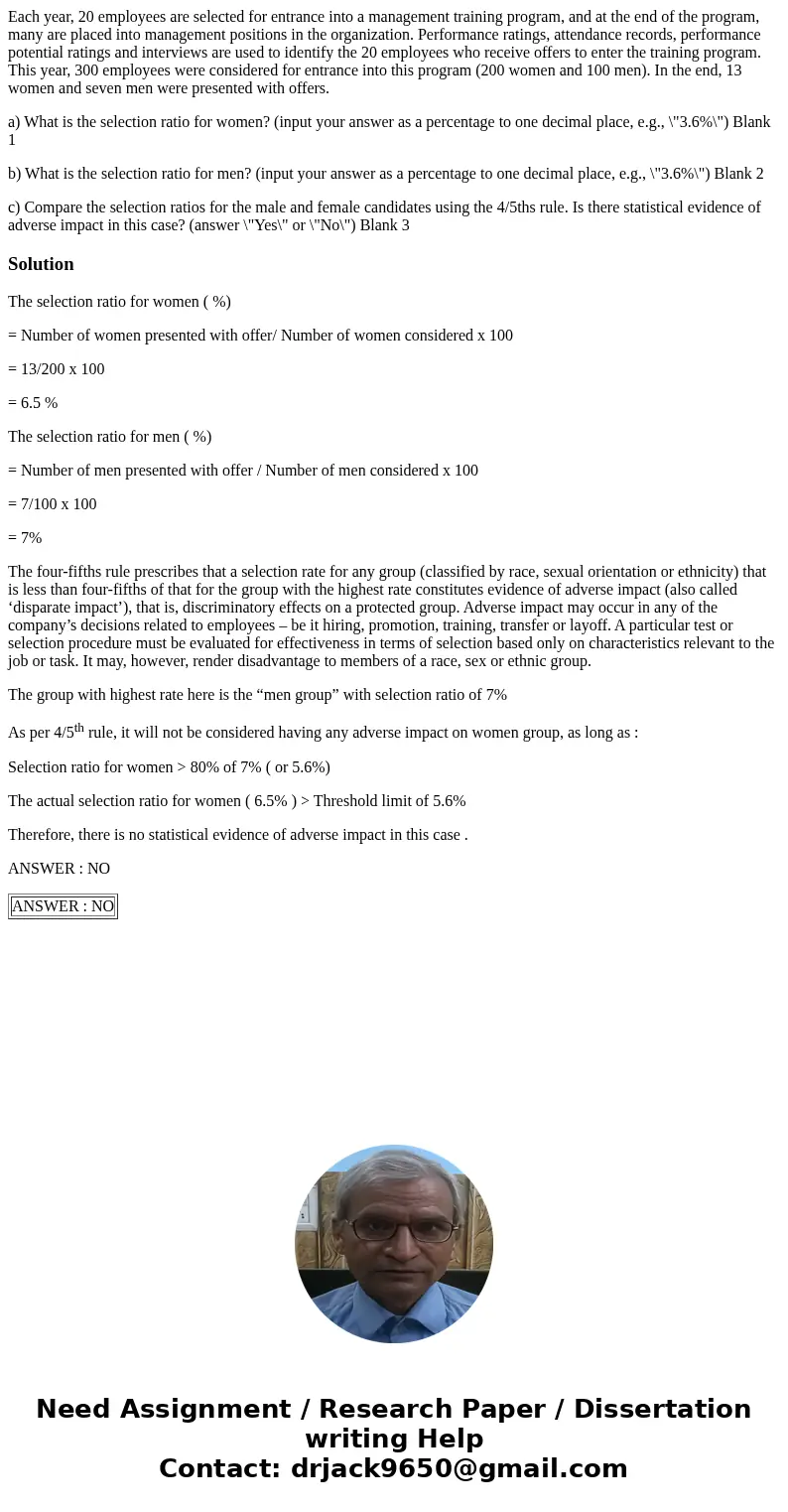Each year 20 employees are selected for entrance into a mana
Each year, 20 employees are selected for entrance into a management training program, and at the end of the program, many are placed into management positions in the organization. Performance ratings, attendance records, performance potential ratings and interviews are used to identify the 20 employees who receive offers to enter the training program. This year, 300 employees were considered for entrance into this program (200 women and 100 men). In the end, 13 women and seven men were presented with offers.
a) What is the selection ratio for women? (input your answer as a percentage to one decimal place, e.g., \"3.6%\") Blank 1
b) What is the selection ratio for men? (input your answer as a percentage to one decimal place, e.g., \"3.6%\") Blank 2
c) Compare the selection ratios for the male and female candidates using the 4/5ths rule. Is there statistical evidence of adverse impact in this case? (answer \"Yes\" or \"No\") Blank 3
Solution
The selection ratio for women ( %)
= Number of women presented with offer/ Number of women considered x 100
= 13/200 x 100
= 6.5 %
The selection ratio for men ( %)
= Number of men presented with offer / Number of men considered x 100
= 7/100 x 100
= 7%
The four-fifths rule prescribes that a selection rate for any group (classified by race, sexual orientation or ethnicity) that is less than four-fifths of that for the group with the highest rate constitutes evidence of adverse impact (also called ‘disparate impact’), that is, discriminatory effects on a protected group. Adverse impact may occur in any of the company’s decisions related to employees – be it hiring, promotion, training, transfer or layoff. A particular test or selection procedure must be evaluated for effectiveness in terms of selection based only on characteristics relevant to the job or task. It may, however, render disadvantage to members of a race, sex or ethnic group.
The group with highest rate here is the “men group” with selection ratio of 7%
As per 4/5th rule, it will not be considered having any adverse impact on women group, as long as :
Selection ratio for women > 80% of 7% ( or 5.6%)
The actual selection ratio for women ( 6.5% ) > Threshold limit of 5.6%
Therefore, there is no statistical evidence of adverse impact in this case .
ANSWER : NO
| ANSWER : NO |

 Homework Sourse
Homework Sourse